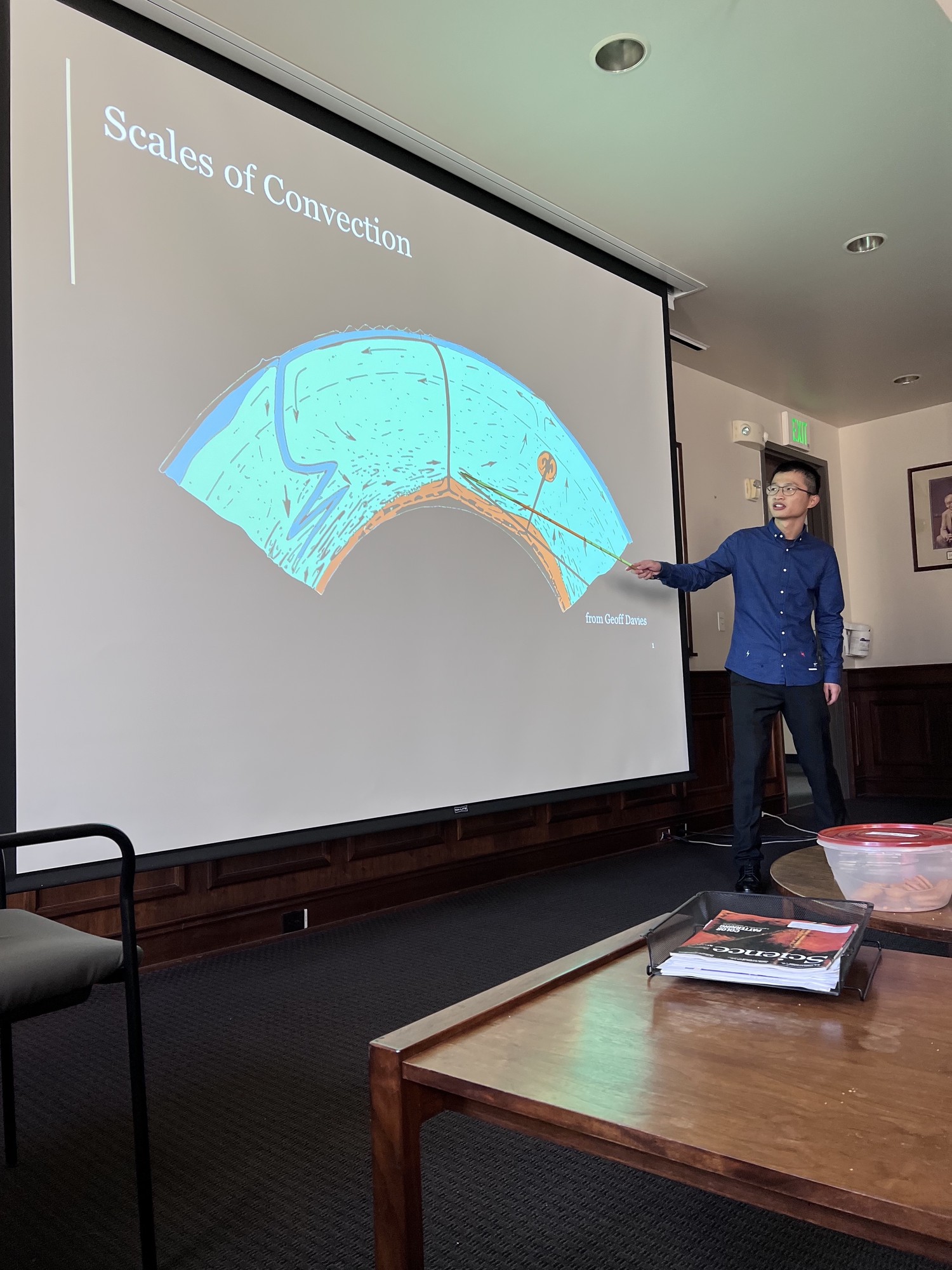Invited Talk at Seismolab: Hotspots from Top to Bottom

Abstract
Many open questions remain regarding the relationship between plumes and large-scale structures in the mantle such as the Large Low Shear Velocity Provinces (LLSVPs) and the nature of LLSVPs themselves. First, I re-examine the excess temperature of hotspots with respect to ridges by inferring the temperature of ridges and hotspots from global seismic models using a thermodynamically self-consistent velocity to temperature conversion. We find hotspots with high buoyancy flux and primordial high 3He/4He signals are significantly hotter than ridges, they may be fed by hot, strong plumes sampling dense, primordial material from the lowermost mantle, possibly the Large Low Shear Velocity Provinces (LLSVPs) or huge Ultra Low Velocity Zones (mega-ULVZs). However, cold hotspots also exist and do not fit the classical plume theory. In the second part of my talk, I will focus on the dynamical relationship between plumes and LLSVPs using laboratory experiments, state-of-the-art 3-D scanning, Stereoscopic Particle Image Velocimetry (SPIV), and Lagrangian analysis to extract plume boundaries. Our experiments show the full time-dependent rich behavior of plume clusters, which merge, branch, split and die over their life cycles. I will show preliminary results from two end-members of LLSVP genesis: purely thermal plume clusters and rigid stationary piles.
This Friday, Xiyuan was invited to visit the seismolab at Caltech for a whole day. It was a nice visit and he was able to talk with seismolab students, postdocs and have a guided tour in Jennifer’s lab. In the afternoon, he presented his PhD work about hotspots from computational, experimental and machne learning approaces.


